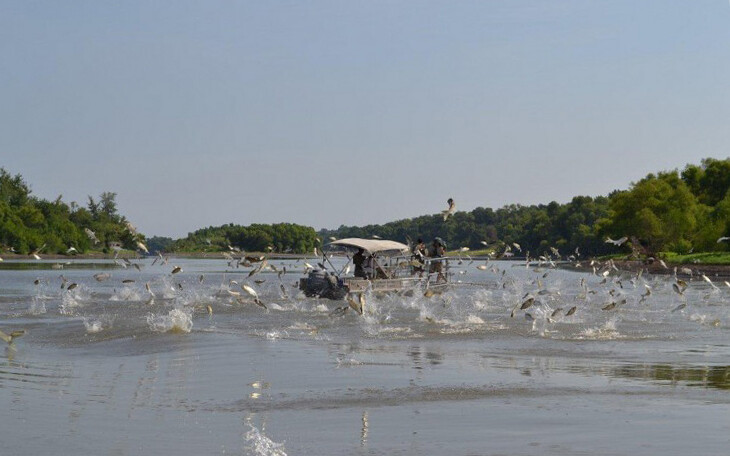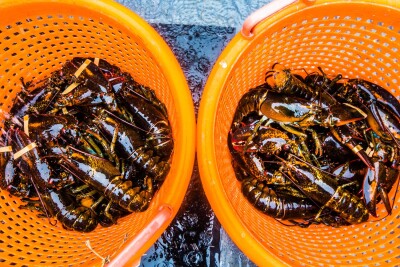A professor at the University of Missouri-Columbia, Mark Morgan, has spent over a decade researching Asian carp, an invasive species to the United States. Also known as silver carp, the fish was introduced to the U.S. in the 1970s to help with water purification in catfish ponds.
Due to Midwest floods, carp made their way into other waterways, and Morgan says this led to the population exploding. The carp population grew more extensive than expected, becoming a burden in larger Midwest waters. Native species struggle to compete for food against the overpopulated carp species.
“The flood of ’93 really started to open the door for carp to move into other locations. Now we have carp up and down the Mississippi River, including its major tributaries,” Morgan told Modern Conservationist.
“The most affected river is the Illinois River, which runs from Chicago to St. Louis. That waterway has the most Asian carp of any place on the planet, including China, which is where the fish came from.”
According to the U.S. Fish and Wildlife Service, female carp can lay more than half a million eggs at a time. The rapid increase in the carp population can be attributed to their reproductive rate. Silver carp typically grow up to 3 feet long and weigh anywhere from 20 to 80 pounds.
Missouri-Columbia research shows that these fish pose a threat not only to the native fishing industry but also to humans.
“They’ve been changed from an invasive to an injurious species,” shares Roy Source, owner and president of Illinois-based fishing co-op Sorce Freshwater. “Part of it is because they’re harming the environment; part is because they hurt people. You get hit in the head by a 60-pound fish, and it could actually kill you.”
The species engage in agile behavior, with the tendency to jump out of the water in groups. The EPA notes that a carp attack can severely injure boaters. In 2019, the Army Corps of Engineers fortified an Illinois waterway to help keep Asian carp from reaching the Great Lakes. According to an NF article, noisemakers, electric cables, and other devices were part of a $778 million plan.
Now, carp are less than 50 miles from Lake Michigan, posing a massive threat. Legislators representing Michigan had pushed for the project for years, hoping to prevent a catastrophic effect on commerce and the way of life within the fishing community.
Through human consumption, Morgan has studied ways to reduce carp in Midwestern waterways for several years. He suggests using Asian carp to address worldwide hunger relief, a promising but overlooked strategy. Carp are plentiful and an inexpensive nutrient-rich food.
“Here we have this vibrant source of nutrition that’s being underutilized in the United States and, in some cases, even wasted. I thought, ‘Why can’t we eat the fish?’” Morgan said.
He started the research project Eat Mo' Carp to raise awareness and funds to harvest further and diminish the invasive carp population in the Midwest. He believes changing the public perception of Asian carp as a trash fish can be daunting. However, the nutritional benefits and how carp is framed as a delicacy in other countries should be the wake-up call that the U.S. needs to take care of the overpopulation.
“You can eat an invasive species, which is good for the environment but also very nutritious. I’ve got two important things working on my side - taste and nutrition.”






